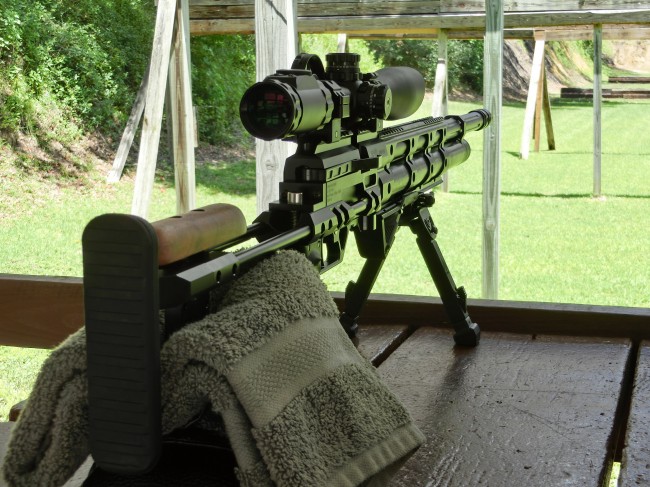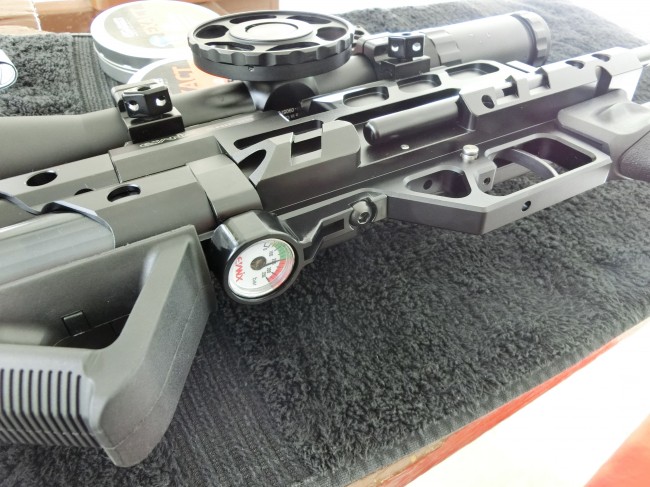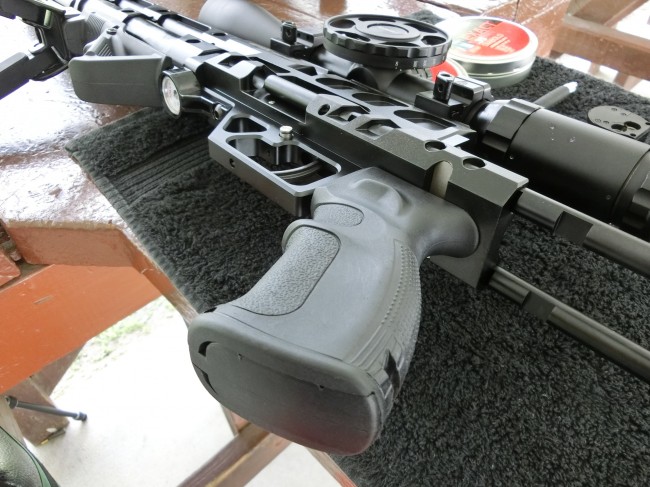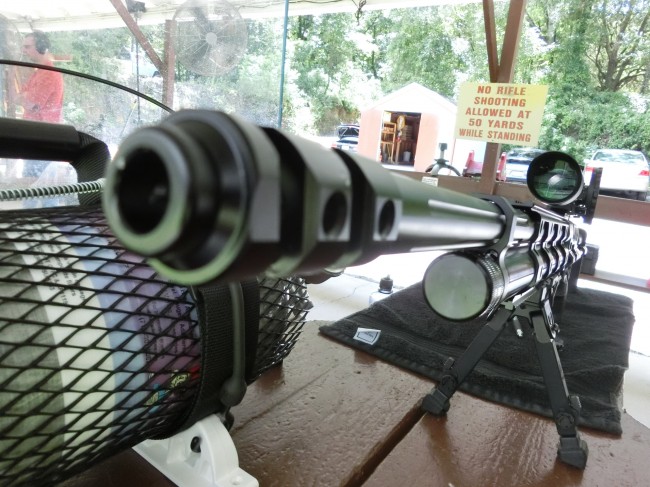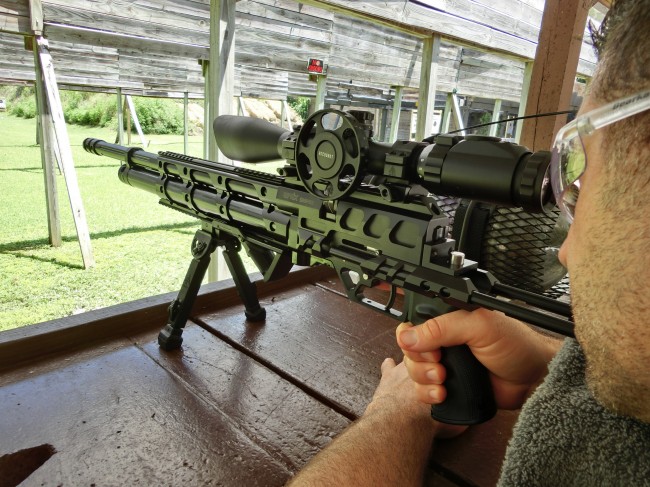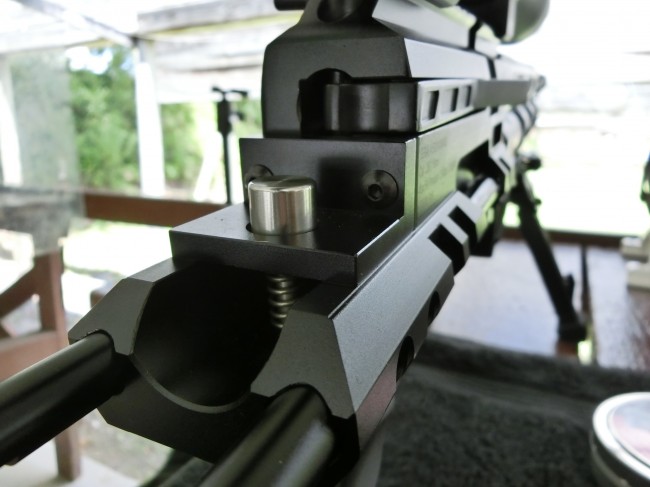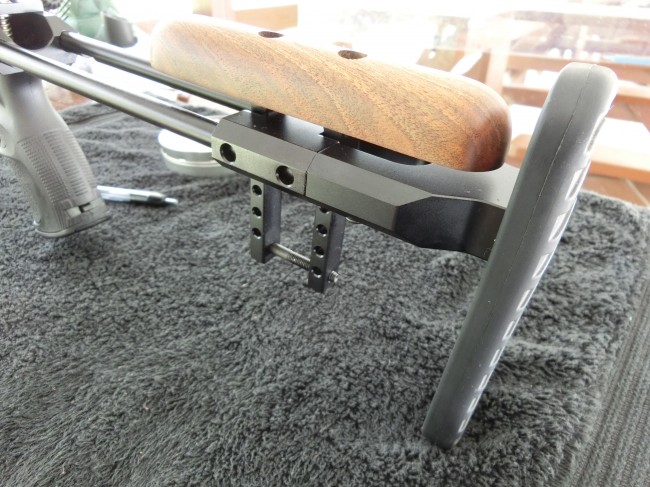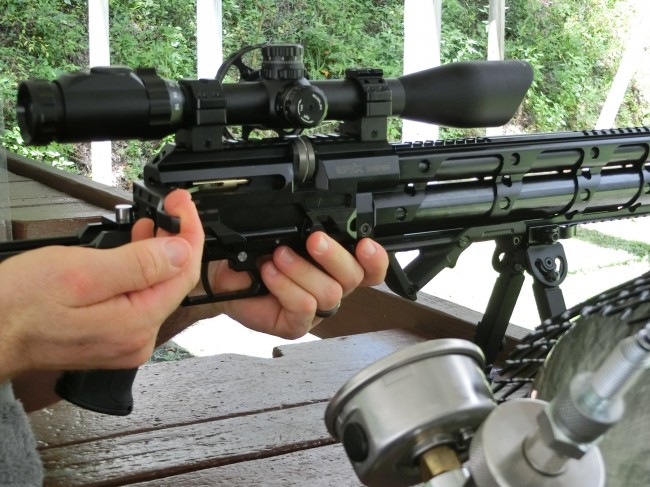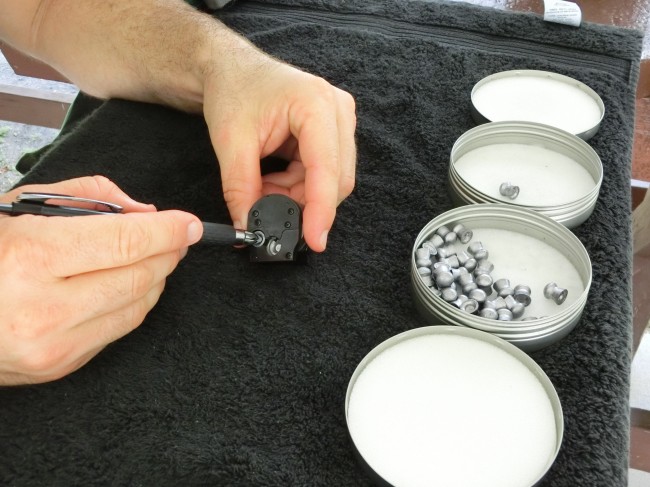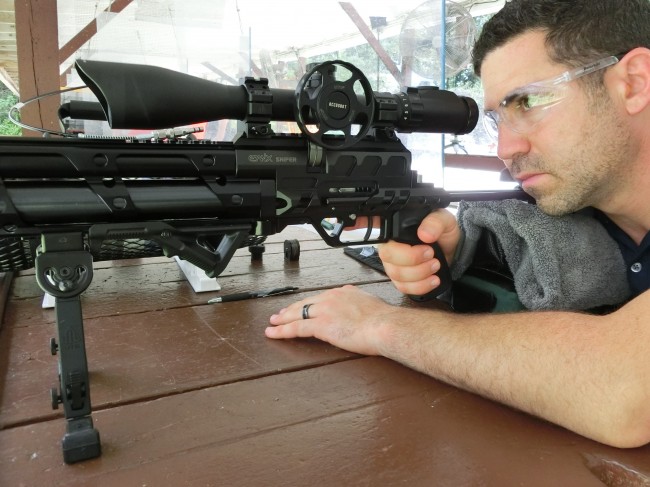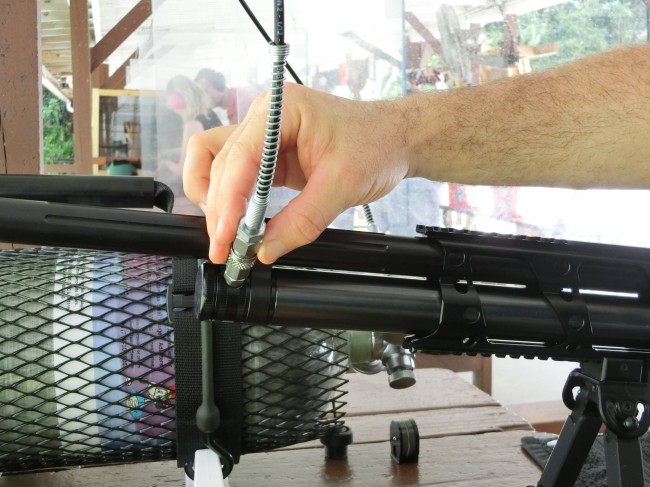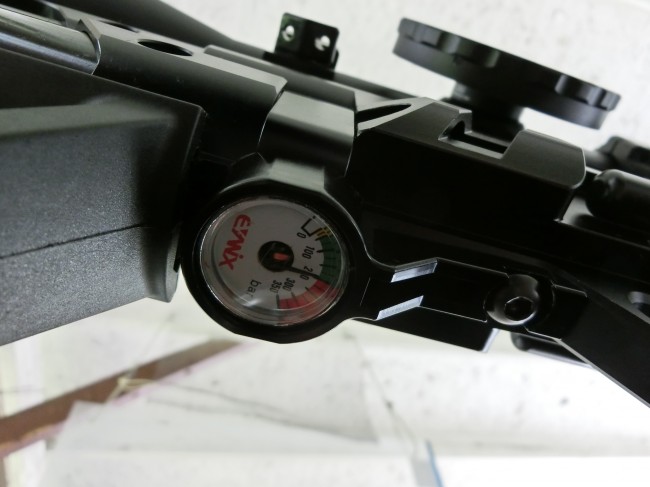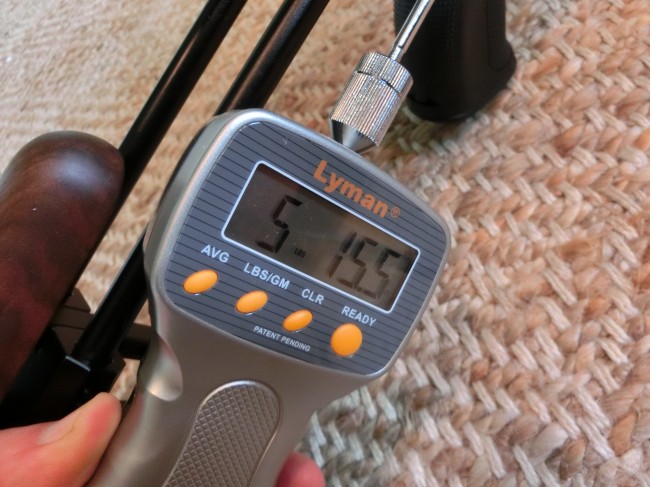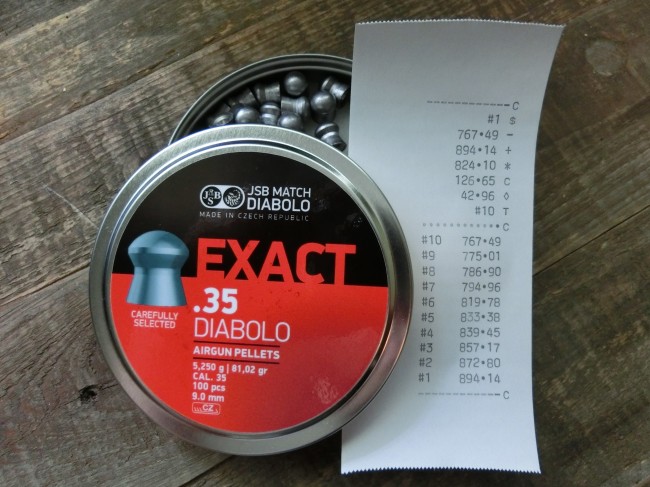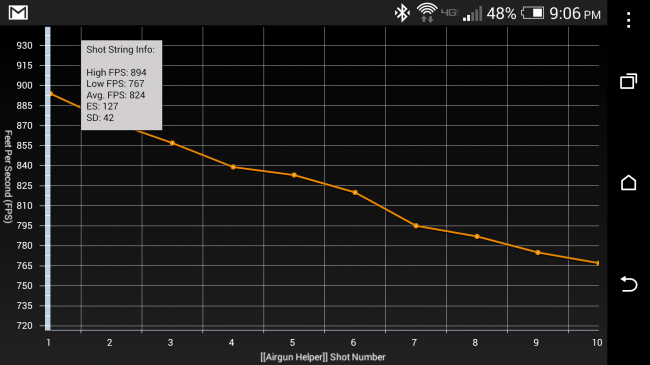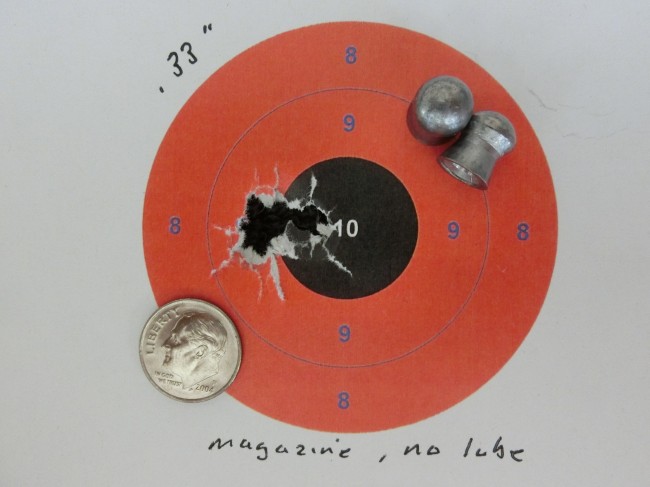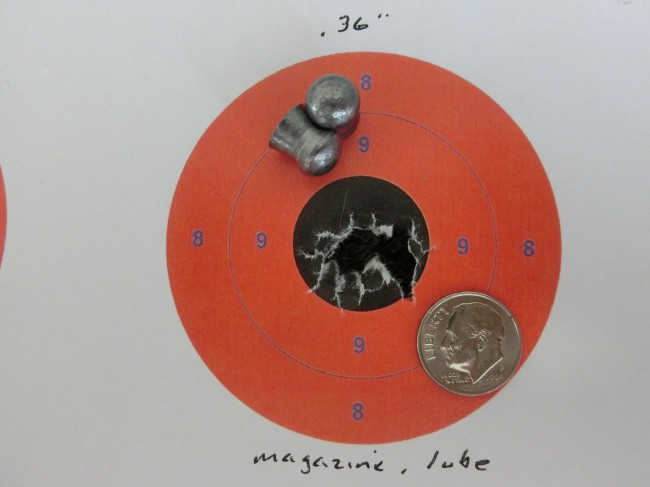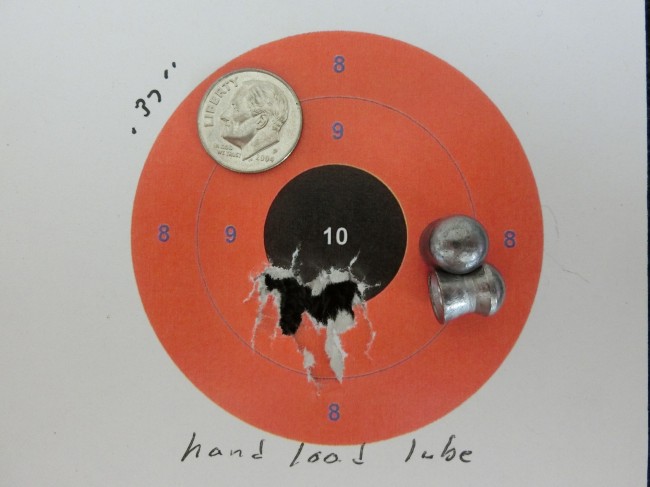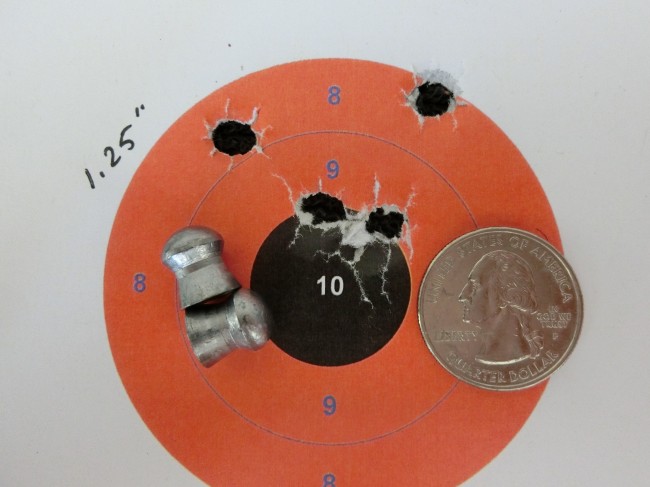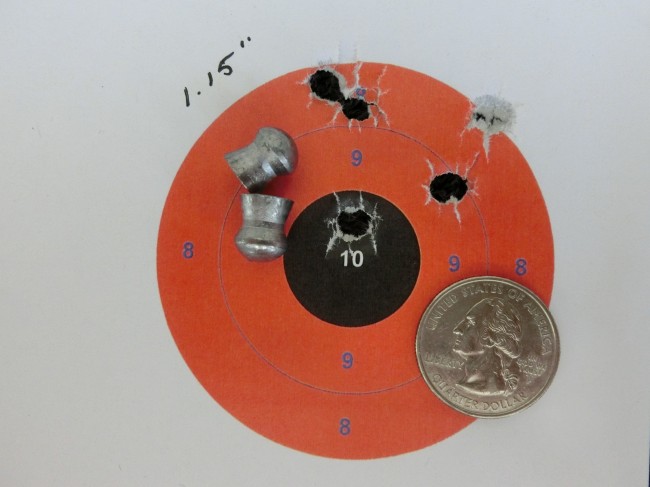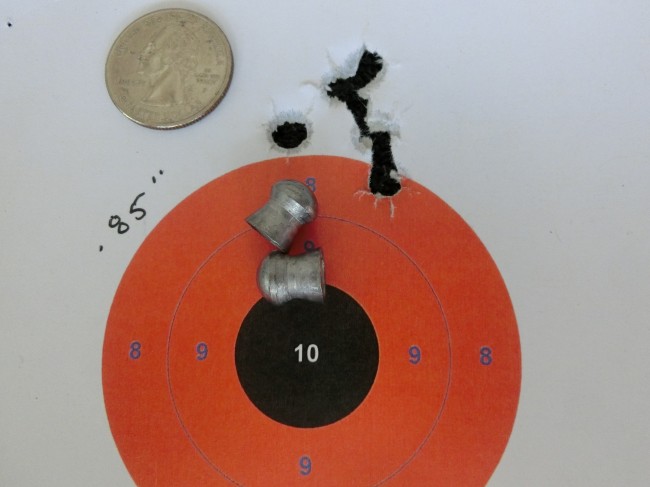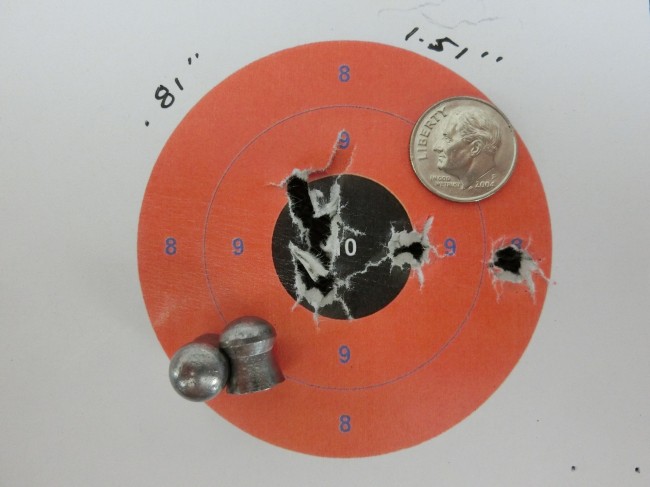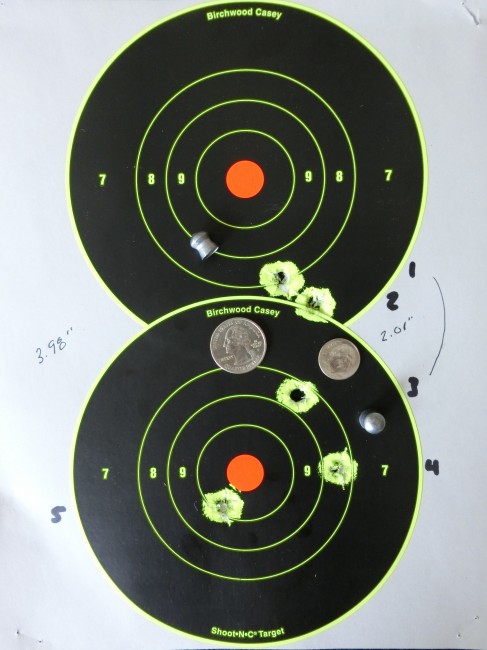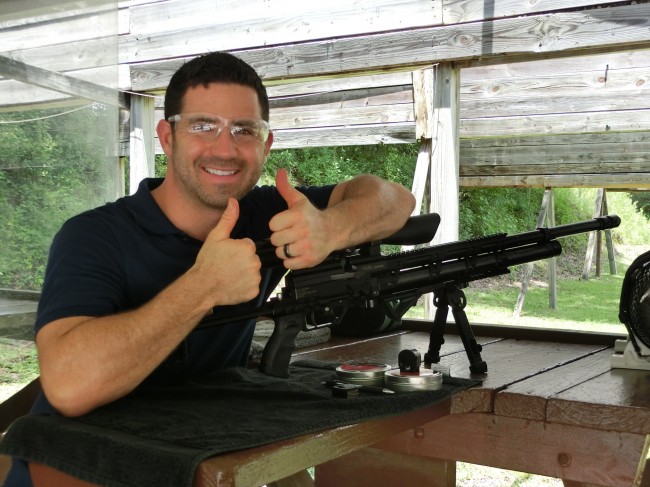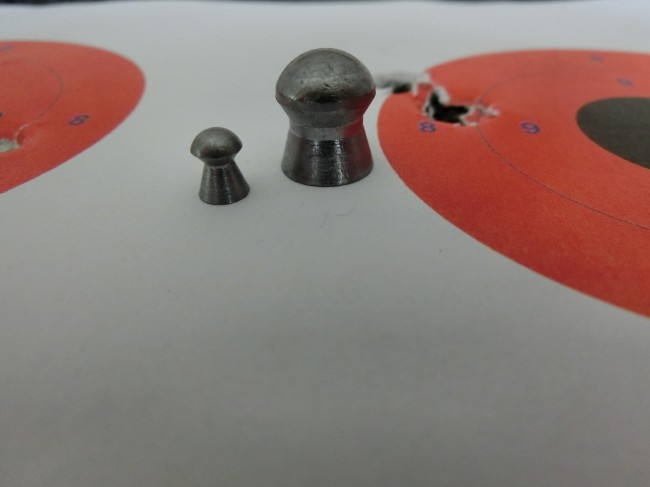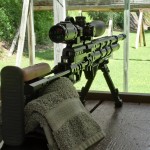Overall Reviewer Rating |
|
At the age of ten (29 years ago) I got my first air rifle and I vividly remember how giant those .177 wadcutters looked. Perhaps being smaller then had something to do with it… or perhaps it was just the newness & excitement of it all. Growing up, I got to know the .20, .22, .25, and most recently the .30 and .357 or 9mm. I had always been drawn to the science of how they each behaved so differently from one another in flight, shot cycle, efficiency… and in impact. So much so, that I grew to appreciate the broad spectrum of application that each spoke to. Then sometime around 2012 my perspective on the whole thing got realigned and I took notice that a “big bore” craze was fast becoming fashionable in the air gun world.
The forums were abuzz of .45 this and .50 that, Crosman brought a .357 to market, and the Korean’s had begun exporting .25 cal monkey guns under the brands of Sam Yang & Sumatra. Then sometime around 2010 a Korean company by the name of Evanix Corp popped up and started marketing extra stylish big bores. Naively thinking I was bearing witness to the evolution of the big bore air gun, further research taught me that this was more of a revolution. History says that the big bore air gun has been around since the 15th century and up to .51 calibers were used for hunting medium sized game through the 17th and 18th centuries… they were even commonly utilized in warfare. The big bore air gun even reigned supreme over muzzle loaders of the day, sought after for being able to fire in the rain and without smoke or a flash. They could even be reloaded & fire faster, and were quieter than their powder burning cousins. So as it turns out, I’m late to the party… but like so many others, I’ve have been caught in the big bore tractor-beam and I had to see for myself what the hubbub was about. Enter the Evanix Tactical Sniper in .357/9mm.
Cosmetics
I’ve coveted the look of this Korean Frankenstein since the day I laid eyes on it… in fact the entire Evanix lineup is darn tantalizing and there are models within in it that will suit both tactical and classic connoisseurs. But this one’s all me. There’s edge everywhere and the Tactical Sniper boasts bold attitude in spades. The skeleton style chassis sets the tone with a touch of Jurassic, which clashes magically with all that modern technical. What’s more, the Sniper is marvelously clean! Imperfections, blemishes, sharp edges… they simply don’t exist here. It’s darn near flawless.
If there are any chinks in the Sniper’s armor, they might be the hard plastic pistol grip & angled foregrip… their texture, flashing, and lego-style assembly is oddly out of place surrounded by such mastery but they don’t detract. The slip-on style silicone rubber buttstock is a tad ho-hum as well, and could be easily knocked off by heavy clothing. The Sniper isn’t really “shrouded” either… well the barrel is shrouded in a piece of fluted aluminum but there isn’t much sound reducing technology within.
In this price point, QUIET is among the top three reasons people choose one air rifle over another and meaningful silencing technology is desperately needed in this one. I haven’t been able to figure out the muzzle brake yet either. It certainly looks awesome and I do know that it strips air to left and right of the muzzle, but I’m not sure yet if it contributes to performance. If nothing else, it does add some weight to the business end of the Sniper which may suppress some of that gnarly muzzle flip, but like I said… it looks cool.
Ergonomics
The Sniper weighs in at 8 1/2 lbs without a scope but feels heavier because it’s so hefty in the nose. The super light rail stock doesn’t help tip that weight rearward either, but Evanix makes it work – sort of. Both fore grip and buttstock can be repositioned to satisfy so it was easy to get comfortable, and despite their looks, felt real good in the hands. Still, for me, it was always heavy in the foregrip, so I remedied this by adding a bipod to the lower weaver rail, that way the ground can hold it all up, not me. As it turned out, I liked this set up so much that I’m perfectly content with it staying there and I don’t foresee myself shouldering this rifle – ever. It’s called a “Sniper,” I’m going to treat it as such.
Speaking of weaver rails, they’re in no short supply on the Sniper. The frame bears home to three of them… one on top of the breech block, one over the top of the barrel shroud, and one underneath the air cylinder. I haven’t done so yet, but I plan on making good use of them. There’s little doubt that a flashlight and laser would look right at home hanging off this platform. I’ve got plans for a carbon fiber Roy Kasten LDC and perhaps some night vision too. (Insert Schwarzenegger grin)
Four those that will take the Sniper into the field, the buttstock extends and retracts slickly by depressing the big silver button just aft of the breech. The foregrip, however, will require you bring a flat head screw driver to remove a screw before it can be repositioned, the same goes for the cheek piece… which can be adjusted for rise and slide but will take an allen wrench to do so. There are enough adjustments here to guarantee that anyone can get comfortable with the Sniper prone or on the bench – it’s that flexible. The wooden cheek piece has undergone some criticism for being brown but for me it works. It validates the whole “old world meets new” motif, gives the Sniper some SKS/AK DNA, and most importantly feels good on my cheek.
Mechanics
I found no great flaw in the Sniper’s switchgear. In fact, all but the trigger impressed. The cocking lever required little force to operate and it was buttery smooth from the get go. Its soft edges felt good in the hands and didn’t irritate even after 4 hours at the helm. Moving it forward with pellet in push was just as lovely and I would equate it to poking a hot stick through a marshmallow.
Evanix’s magazines operate with all the fluidity they should and their clicks and snaps are satisfying to the senses. My only beef was that you’ll need some sort of “poker” to seat each pellet (I used a pen). It ships with two magazines, holding seven pellets each and their loading sequence is easy. Drop a pellet into the magazine’s left most port, seat the pellet with a pen, rotate the magazine’s wheel until you hear a “click”… repeat six more times. There will be a ball detent recess in the breech to tell you when the magazine has been slid far enough into place… and it can be loaded into either side, which is nice.
The safety is metal to match the stock extension’s slide release button, albeit a smaller version and it’s spot on. With my index trigger finger extended, I could easily depress it just before my finger fell onto the trigger blade. It was fluid to operate, clicked into and out of place, and never gave me any trouble. The Sniper ships with a proprietary fill probe that worked just fine too. At the muzzle end of the air cylinder, you’ll find a rotating dust cap that you can turn in either direction to expose the fill port. Once you do, insert the probe and fill up to 200 bar. When you’re done, remove the probe and rotate the cover to seal off the port. It all works like it should and some audible valve buzz/ring when filling is normal.
I like the positioning of the Sniper’s belly mounted pressure gauge and it’s nice not to have to look down the business end of a gun to see how much air ones got. This one is easy to read, convenient to lay eyes on, and reported the same pressures as did my fill equipment. The party pooper was that that clear plastic lens over the gauge fell out several times and I’ve confirmed that mine’s not the only one doing it… grrrr.
An air gun’s ability to be accurate is closely linked to the refinement of its trigger. Because our air guns have a slower overall shot cycle when compared to a powder burner, they can be quite sensitive to frumpy triggers. Believe it or not, there many tenths of a second that transpire between the time you snap that trigger blade and the time when pellet finally leaves the barrel. A heavy or unpredictable trigger works against the shooter by influencing their ability to keep the cross hairs on the bullseye throughout the shot cycle. In my case, I find it harder to stay on target during the all important follow through when my trigger squeeze is pulling my retical inches off task.
I would have expected the Sniper to come with a 2-3 pound trigger for this price – it’s a rifle worthy of such hardware. But mine came set to an obese 8.5 lbs of pull, making it very challenging to “snipe” with. I understand the liability for the manufacturer but if FX, Daystate, and Rapid Air Weapons can deliver a big bores to the public with 1-2 pound triggers, than so can Evanix. Fortunately, the Sniper’s trigger is somewhat adjustable and I succeeded in dialing it back to 5.5 pounds only to have it creep back up to 6 lbs after a few dozen shots. The first stage is relatively short and heavy, the second stage engages a bit mushily, but in the end it brakes with acceptable predictability. Fast forward – this Sniper is a wonderfully accurate big bore which has a trigger that’s a solid detractor of this gun’s inherent accuracy.
Performance
Ok, so out of this Sniper Tactical I fired .35 pellets but Snipers can be had in .22, .25, .45, and .50 caliber too. It goes without saying that the .35 will pack a serious wallop upon anything it makes contact with and the industry standard for foot pounds of muzzle energy (FPE) to humanly take small game is six. This rifle will deliver twenty four times that for 144 FPE, so let’s all just agree that this gun/round combo isn’t for dispatching chipmunks… hmmm? (Insert evil grin)
The internet is filled with stories of these rifles taking hog, deer, coyote, fox, goats, etc and 150 years ago, people… so you get the idea. A 200 bar fill will get you two magazines of useful shots (14) but there is no desirable bell to speak of in the shot curve. This means that each successive shot will be of a lesser velocity than the one prior but for you velocity junkies out there, fear not… this Sniper pushes 81 grain pellets to speedy 894 fps. I believe Evanix’s strategy was to achieve ten shots at well over 100 FPE as opposed to 20 shots of similar velocity… and they succeeded.
On a full charge the Sniper will deliver an average of 135 FPE for the first three shots and this presents a winning formula for the typical hog or deer hunter. Even shot # 10 from a 200 bar fill will deliver over 100 FPE with an 81 grain pellet. It’s not all hugs & kisses though. For me, I was more curious about how the hardware would perform and how the projectile would behave in flight at various distances. A descending shot chart and a heavy pellet speaks to a peril… and that peril manifests itself as a point of impact that closely resembles that said chart – the pellet descends at distance with each successive shot… more on this later.
So I’m going to save everyone a lot of headache. If you’re used to stacking pellets with your .25 and smaller caliber PCP’s, this aint’ that, so don’t expect it to be. I admittedly sprouted a few more grays learning how to shoot a big bore straight. I’m no engineer but I’m fairly certain that the obstacles are intrinsic to a slow shot cycle (typical of any air gun) aggravated by a recoil that’s much higher than what we’re used to. Marry these characteristics to a heavy trigger and you’ve unleashed the perfect storm for feeling like you’ve got a defective product on your hands… when in reality you’ve got an accurate gun and a challenging mess to sort out. It can be done though.
If you’ve mastered shooting the springer straight, then you can master the big bore PCP… success with each is similar. Forget a firm shoulder & cheek weld – keep them medium and if you’re utilizing a bipod as I was, don’t load it up with your body weight. Outside that, practice a repeatable hold & trigger squeeze and good things will happen…. Have a look.
You won’t have to recall all that technique I previously spoke of until you stretch things out to 50 yards and beyond… and 25 yards, one holing was a piece of cake. I initially found it challenging to group my shots inside of an inch at 50 yards but once I got the hang of the technique, the groups shrank. I also experimented with pellet lube which this barrel did like.
Now that I had my swagger on at 50, I couldn’t wait to test the Sniper at 100 yards. Before we go there, lets touch once again on that previously mentioned peril I spoke of regarding the Sniper’s descending shot chart. Shooting one full magazine of 7 pellets from 200 bar, I did not observe any drop in the point of impact at 50 yards. At 100 however, as predicted, drop got ugly. It boiled down to this… if you’re willing to refill every 2 shots, or willing to learn to compensate with holdover with each shot, you will be able to group a magazine of 7.
I had a plane to catch that afternoon and flat out ran out of time but the below groups suggests two things…
- The Sniper .357 is supremely accurate at 100 yards.
- The drop from shot to shot is supremely significant.
The 100 yard group above was shot with a 3 dot holdover at 10x, with cross hairs centered on the upper red dot. From 200 Bar, you can clearly see our earlier depicted descending shot chart unfold down the target with each sequential shot losing velocity and landing further beneath the original point of aim. What’s remarkable is that the group still measured 3.98″ center to center. Had I compensated for drop from shot to shot, or had I refilled every 2 shots, the Evanix Sniper would have been grouping inside of 2 inches at 100 yards. Frumpy trigger and all – damn, this is one heck of an accurate air rifle!!
Despite its few shortcomings the Sniper is still bad to the bone. Testing drilled down on some hard core facts. It’s marvelously powerful and can be lethally accurate over long distances. Its appearance, weight, valving, and trigger are open to further discussion but for me, it’s all yummy. I look forward to spending more time with the Sniper tuning that shot curve flat, silencing her snort, and experimenting with various pellets. There is certainly more fun to be had with this modern big bore.
Helpful Links:
